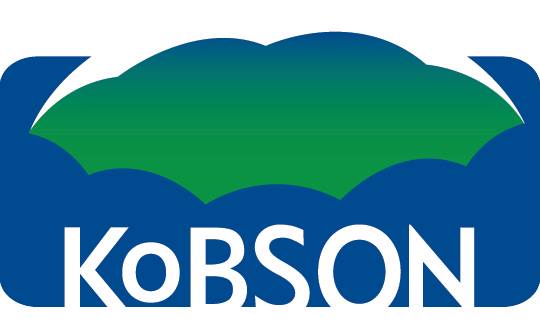It is of great importance to ascertain the airflow pattern around a device that functions by blowing out air, as the resulting airflow pattern will ultimately determine the device's performance. The airflow pattern surrounding an air purifier is greatly influenced by the product design of its constituent components, especially the blow air diffuser and the return air components. Given the growing and, to some extent, compulsory usage of portable air purifiers among the general public, especially among those concerned with maintaining good indoor air quality, this study aimed to identify the optimal product component design for portable air purifiers. This was achieved by considering the effects of air velocity and pressure on the performance of the air purifiers. In this study, a numerical simulation application was employed to obtain data on air velocity and pressure for each product component design variation. The objective was to generate a report on air velocity and pressure for various component design variations of high-efficiency particulate air (HEPA) filters, including variations in height and diameter, rotor blade tilt angle and width, and inlet hole casing design pattern.
We would like to thank the Directorate of Research and Community Service (DRPM) of Institut Teknologi Sepuluh Nopember (ITS), Surabaya, Indonesia, for providing a flagship fund that enabled the successful completion of this study.
1.
Yoda,
Y., Tamura, K., Adachi, S., Otani, N., Nakayama, S.F., Shima, M. (2020).
Effects of the use of air purifier on indoor environment and respiratory system
among healthy adults. International Journal of Environment Research and Public
Health, vol. 17, 3687; doi:10.3390/ijerph17103687.
2.
Park,
H., Park, S., Seo, J. (2020). Evaluation of air Purifier’s performance in
reducing the concentration of fine particulate matter for occupants according
to its operation methods. International Journal of Environment Research and
Public Health, vol. 17, 5561; doi:10.3390/ijerph17155561.
3.
Mousavi,
E.S., Pollitt, K.J.G, Sherman, J., Martinello, R.A. (2020). Performance
analysis of Portable HEPA filters and temporary plastic anterooms on the spread
of surrogate coronavirus. Building and Environment, vol. 183. 0360-1323/© 2020 Elsevier. http://doi.org/10.1016/j.buildenv.2020.107186.
4.
Wang, M., Cheng, Xufeng, C., Liang, J. (2021). Research on the
design of a portable desktop air purifier based on Kansei Engineering. DOI
10.1109/ACCESS.2021.3119203.
5.
Heo,
K.J., Park, I., Lee, G., Hong, K., Han, B., Jung, J.H., Kim, S.B. (2021).
Effects of air purifiers on the spread of simulated respiratory droplet nuclei
and virus aggregates. International Journal of Environmental Research and
Public Health, vol. 18, 8426. https://doi.org/10.3390/ijerph18168426.
6.
Tzouttzas,
I., Maltezou, H.C., Barmparesos, N., Tasious, P., Efthymiou, C., Assmakopoulos,
M.N., Tseroni, M., Vorou, R., Tzermpos, F., Antoniadou, M., Panis, V.,
Madianos, P. (2021). Indoor air quality evaluation using mechanical ventilation
and portable air purifiers in an academic dentistry clinic during the Covid-19
pandemic in Greece, International Journal of Environmental Research and Public
Health, vol. 18, 8886. https://doi.org/10.3390/ijerph18168886.
7.
Duill,
F.F., Schulz, F., Jain, A., Krieger, L., Wachem, B.V., Beyrau, F. (2021). The
impact of large mobile air purifiers on aerosol concentration in classrooms and
the reduction of airborne transmission of SAR-CoV-2. International Journal of
Environmental Research and Public Health, vol. 18,11523. https://doi.org/10.3390/ijerph182111523.
8.
Zhai,
Z (J)., Li, H., Bahl, R., Trace, K. (2021). Application of Portable Air
Purifiers for mitigating COVID-19 in large public space. Buildings, vol. 11,
329. http://doi.org/10.3390/buildings11080329.
9.
Basinska,
M., Michalkiewicz, M., Ratajczak, K. (2021) Effect of air purifier use in the
classrooms on indoor air quality-case study, atmosphere, vol. 12, 1606. http://doi.org/10.3390/atos12121606.
10.
Choe,
Y., Shin, J., Park, J., Kim, E., Oh, N., Min, K., Kim, D., Sung, K., Cho, M.,
Yang, W. (2022). Inadequacy of air purifiers for indoor air quality improvement
in classrooms without external ventilation. Building Environment, vol. 207.
0360-1323/© 2021 Elsevier Ltd. https://doi.org/10.1016/j.buildenv.2021.108450.
11.
Iskandriawan, B., Jatmiko, J., Safaat, A., Nugraha, J.A. (2020). Air Velocity and pressure drop exploration inside pipe frame of air
purifier bicycle using numerical analysis. Journal of Engineering Science and
Technology, vol. 15, no. 6, 2935-3954, ©
School of Engineering, Taylor’s University.
12.
Budiyanto, M.A., Naufal, F., Putra, G.L., Riadi, A., Suprayogi, D.T., Iqbal, M., Pribadi, T.W. (2024). Numerical investigation into the
pressure and flow velocity distributions of a slender-body catamaran due to
viscous interference effects. International Journal of Technology, vol 15, no. 2, 247-258
13.
Cicero, S., Lacalle, R., Cicero, R., Fernandez, D., Mendez, D. (2011). Analysis of the cracking causes in
aluminum alloy bike frame. Engineering
Failure Analysis, vol. 18, no. 1, 34-46
14.
Kujawa, M., Lubowiecka, I., Szymczak, C. (2020). Finite element modeling of
a historic church structure in the context of masonry damage analysis. Engineering Failure Analysis, vol 107, 1-18
15. Iskandriawan, B. (2023). Structure simulation on portable commuter bike
considering frame design and material alternatives. Journal of Engineering and Technological Sciences, vol. 55, no. 1, 11-21, DOI.10.5614/j.eng.technol.sci.2023.55.1.2.
16.
Hariyanto,
R., Soeparman, S., Widhiyanuriyawan, D., Sasongko, M.N. (2018). CFD study on
the ability of a ventilated blade in improving the savonious rotor performance,
Journal of Applied Engineering Science, vol. 16, No. 3, 383-390,
doi:10.5937/jaes16-17189.
17.
Al-Osmy,
S.A.T., Al-Hashimi, S.A.M., Mulahasan, S., Fartosy, S.H. (2023). Simulation of
flow through an equispaced in-line cylinder in open channels. Journal of
Applied Engineering Science, vol. 21, no.1. 253-262, doi:10.5937/jaes0-40078.
18.
Nurzhanova,
O., Zharkevich, O., Bessonov, A., Naboko, Y., Abdugaliyeva., G., Taimanova, G.,
Nikonova, T. (2023). Simulation of the distribution of temperature, stresses,
and deformations during splined shafts hard-facing. Journal of Applied
Engineering Science, vol. 21, no. 3, doi: 10.5937/jaes0.42774.
19.
Min,
H., Shin, J., Choi, J., Lee, H. (2017). Modeling and simulating flow phenomenon
using Navier-Stokes equation. Proceedings of the International Conference on
Industrial Engineering and Operations Management, Rabat, Morocco, April 11-13,
2017, p.1902-1912








